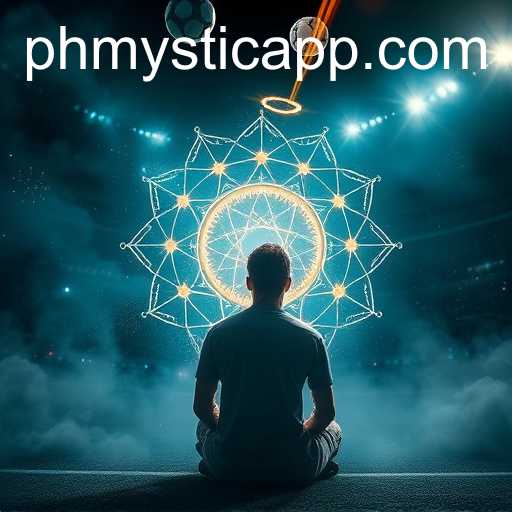A comprehensive exploration of the phmystic concept in sports, highlighting the connection between mental strength, emotional regulation, and athletic performance.
Exploring the Mystical World of Sports Through Phmystic
Sports have long been an integral part of human society, serving not only as a source of entertainment and physical fitness but also as a platform for unity and competition. In the modern world, the rise of innovative techniques and technologies has broadened the scope of sports, introducing new ways to engage with them. Enter "phmystic," a concept that encapsulates the enigmatic, almost mystical connection between athletes, their mindset, and the game they partake in.
The Essence of Phmystic
Phmystic is not just a buzzword; it is a philosophy that revolves around the mental and emotional state of athletes. At its core, phmystic emphasizes the profound impact of mental strength and focus in sports. It suggests that true athletic prowess comes not merely from physical training but also through cultivating a deep, almost spiritual connection with one’s sport.
The Role of Mental Conditioning
Incorporating phmystic into sports begins with mental conditioning. Athletes today are increasingly recognizing the significance of mental health and psychological well-being as key components of performance. Mental conditioning programs focus on techniques such as visualization, meditation, and mindfulness, aimed at equipping athletes with the tools they need to achieve peak performance.
Through mindfulness, athletes engage in practices that heighten their present-moment awareness. This allows for a more profound connection between mind and body, thereby embracing the phmystic perspective.
Visualization and Its Power
Visualization is a potent tool in the arsenal of any phmystic practitioner. By vividly imagining specific scenarios, athletes can mentally rehearse and refine their techniques. This method helps in building confidence and preparing mentally before they step onto the field or court.
Imagine a basketball player who, before the game, closes their eyes and visualizes each shot landing perfectly, or a runner envisioning crossing the finish line ahead of the competition. Studies have shown that mental rehearsal, when combined with physical practice, can significantly enhance athletic performance.
Emotional Resonance and Sports Performance
Emotions play a crucial role in shaping an athlete’s phmystic state. Learning to harness emotions and maintain control over them during high-pressure moments is pivotal. Emotions such as fear, excitement, and determination can drive an athlete to surpass their limits, yet managing these emotions is an art form.
Phmystic training often includes emotional regulation strategies, teaching athletes how to capitalize on positive emotions while minimizing the impact of negative ones. This ability to control emotional responses is not only essential for success in sports but also contributes to overall mental health and resilience.
Phmystic in Team Sports
While personal phmystic development is critical, team dynamics introduce a unique layer of complexity. Team sports require a collective mentality that often extends beyond individual focus. Communication, trust, and shared goals among teammates can significantly enhance the group’s collective phmystic state.
Coaches play a vital role in fostering a team environment where the phmystic principle thrives. By encouraging open communication and providing support, coaches help their teams develop a culture of resilience and unity, which is often reflected in their performance.
The Role of Technology
With the surge in technological advancements, athletes now have access to tools that were once unimaginable. Virtual reality (VR), augmented reality (AR), and biofeedback devices are revolutionizing the way athletes train mentally. These technologies are instrumental in nurturing the phmystic experience.
VR and AR provide immersive experiences that replicate real-world scenarios and help athletes adjust their strategies in a controlled environment. Biofeedback devices allow athletes to monitor physiological responses, offering insights into stress levels, heart rate, and more. Through this data, athletes can modify their training regimens to optimize their mental and physical performance.
The Global Phmystic Movement
What began as an individual-centric concept has evolved into a global movement. Camps, workshops, and seminars dedicated to phmystic are gaining popularity worldwide. Sports organizations and training institutions are increasingly adopting these methodologies to promote overall athletic development.
These initiatives are reshaping the landscape of sports, encouraging athletes at all levels to explore the depths of their mental and spiritual capacities. The phmystic movement is not just limited to professional athletes; it is also reaching aspiring athletes, children, and enthusiasts, teaching them the significance of mindfulness and mental strength from a young age.
Challenges and Considerations
Despite its many benefits, the implementation of phmystic in sports is not without challenges. Many athletes and coaches hesitate to embrace this concept due to a lack of understanding or skepticism about its efficacy. There is a growing need for comprehensive education and research to support the integration of phmystic into mainstream sports training.
Additionally, there is a risk of overemphasis on mental conditioning at the expense of physical training. It is crucial to maintain a balanced approach, ensuring that phmystic complements, rather than replaces, traditional training methods.
Conclusion
As the sporting world continues to evolve, phmystic stands as a beacon of holistic development, promising unparalleled performance through a harmonious blend of mind, body, and emotion. By embracing this mystical synergy, athletes can unlock new levels of potential, redefining what success in sports truly means. While challenges persist, the journey toward integrating phmystic into sports is an exciting frontier with the promise of a brighter, more connected future.




